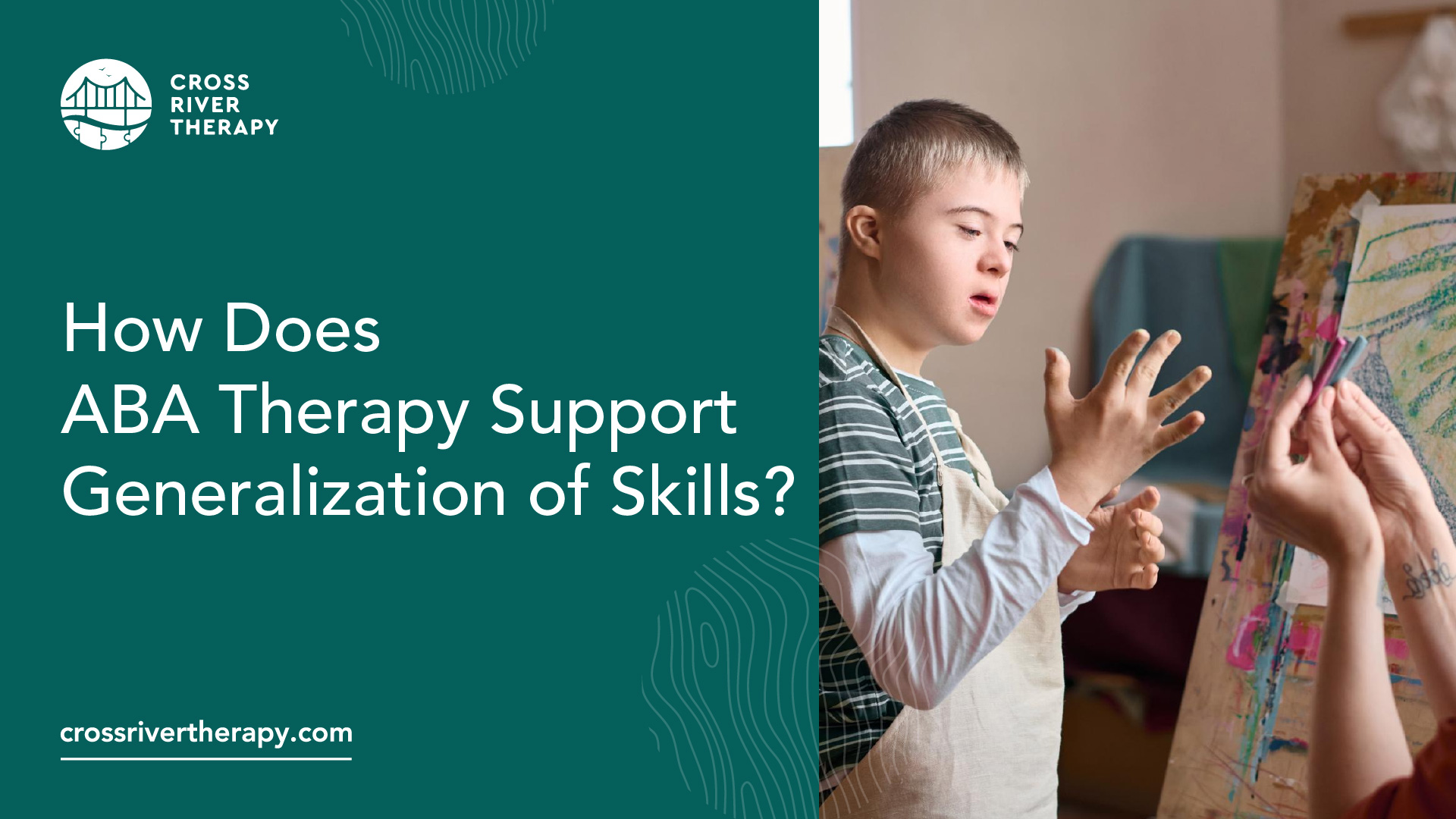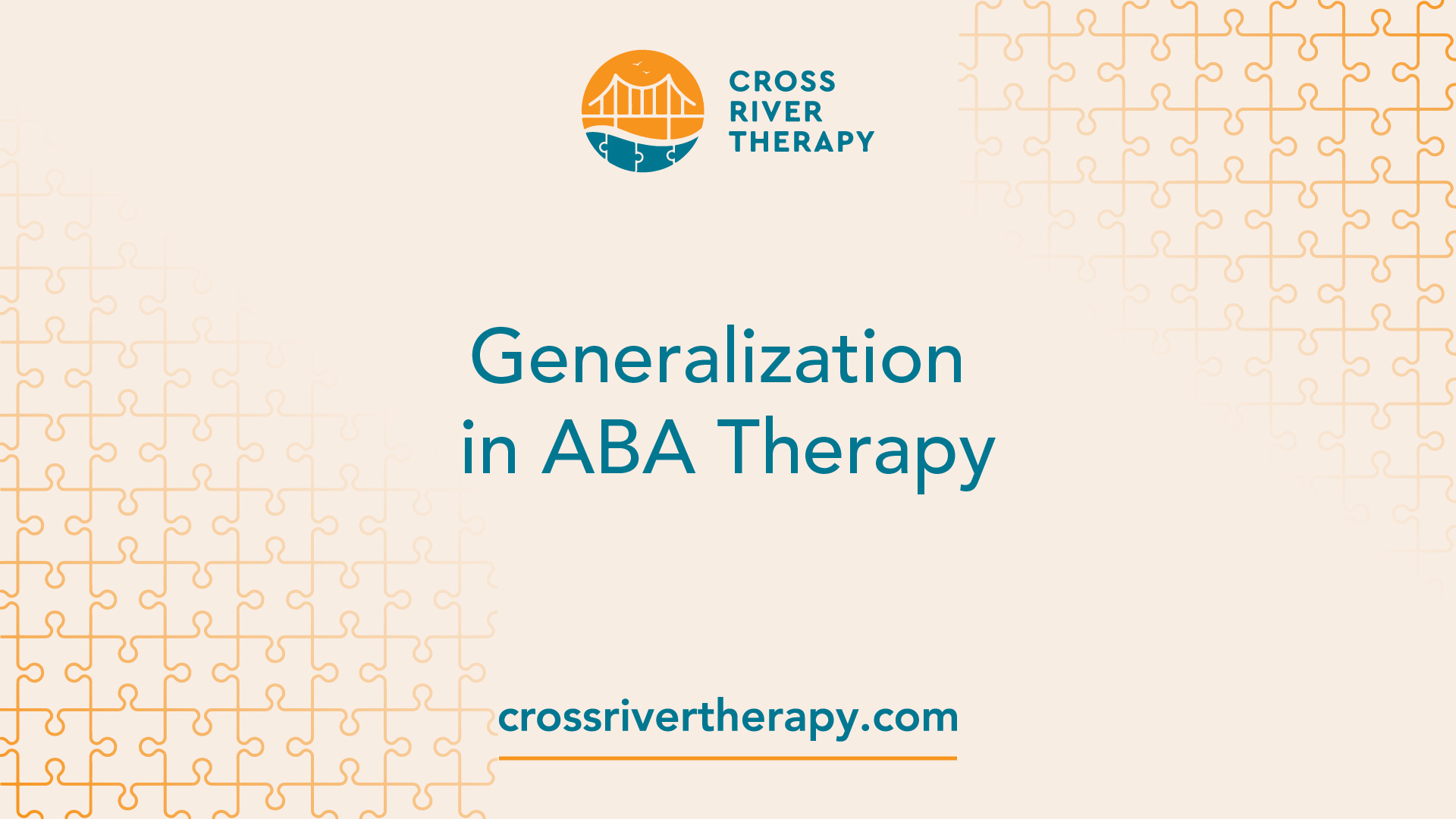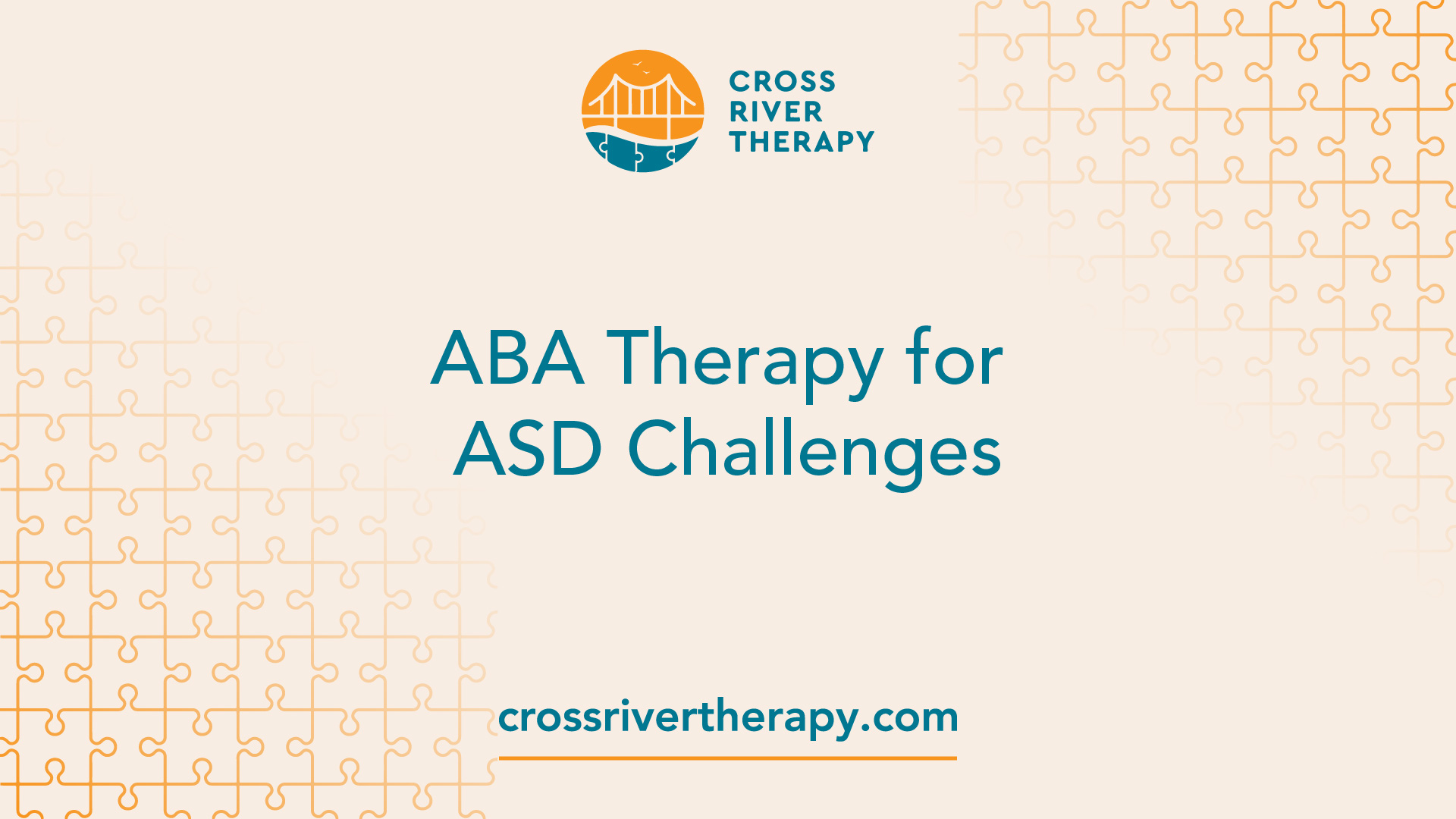How Does ABA Therapy Support Generalization of Skills?
Unlocking the power of ABA therapy for your child with autism! Discover how generalization skills pave the way for progress.

Understanding ABA Therapy
Applied Behavior Analysis (ABA) therapy is a widely recognized and effective intervention for individuals with autism spectrum disorder (ASD). A key aspect of ABA therapy is the importance of generalization, which refers to the ability to apply learned behaviors, skills, and strategies across different situations, settings, and individuals. Generalization ensures that progress made in therapy sessions extends to everyday life, leading to greater independence and success [1].
Importance of Generalization
Prioritizing generalization efforts and implementing targeted strategies in ABA therapy can empower individuals to apply learned skills in diverse contexts, achieve lasting behavior change, and thrive in all aspects of life. Generalization goes beyond rote memorization and mechanical repetition, emphasizing the practical application of skills in real-life contexts.
By promoting generalization, individuals with autism can develop skills that are flexible and adaptable, providing them with the tools necessary to navigate various environments and social interactions. Generalization allows for greater independence and autonomy, enabling individuals to generalize skills learned in therapy to school, community, and vocational settings.
Impact on Autism Behaviors
Generalization is a critical aspect of ABA therapy, particularly for Board Certified Behavior Analysts (BCBAs) working with individuals with autism. Without intentional plans and strategies to promote generalization, individuals may struggle to apply acquired skills and behaviors outside the therapy environment.
ABA therapy aims to address the core deficits associated with autism, such as communication difficulties and repetitive behaviors. Through targeted interventions and systematic teaching methods, individuals with autism can learn new skills and behaviors. However, the ultimate goal is for these skills to generalize across different people, places, and situations. This ensures that individuals can effectively and independently use these skills in their daily lives.
By targeting generalization in ABA therapy, practitioners can help individuals with autism overcome challenges related to the transfer and application of skills. This leads to greater functional independence, improved social interactions, and enhanced overall quality of life.
Understanding the importance of generalization and its impact on autism behaviors is crucial for both parents and practitioners involved in ABA therapy. By implementing strategies and interventions that promote generalization, individuals with autism can experience long-term success and achieve meaningful outcomes in various aspects of their lives.
Generalization in ABA Therapy

In the context of ABA therapy, generalization refers to the application of learned skills across various settings, stimuli, and situations. The goal of generalization is to ensure that the skills acquired during therapy are not limited to specific contexts but can be utilized in real-life scenarios. ABA therapy focuses on two types of generalization: stimulus generalization and response generalization.
Stimulus Generalization
Stimulus generalization in ABA therapy involves the ability to respond to different but similar stimuli. It refers to the learner's capacity to apply a behavior learned in one situation or with one stimulus to similar situations or stimuli, even if they are not identical to those used during teaching. For example, if a child has learned to identify red apples during therapy sessions, stimulus generalization would allow them to recognize and label red apples in different settings, such as at the grocery store or in a picture book.
Promoting stimulus generalization involves systematically introducing variations in the teaching environment. By gradually exposing the learner to a range of settings, materials, and people, ABA therapists help individuals generalize their skills beyond the confines of the therapy room. This ensures that the skills learned in a controlled environment are applicable to the real world. To learn more about strategies for generalization, refer to our section on varying teaching environments.
Response Generalization
Response generalization in ABA therapy involves the ability to use different but similar responses to achieve the same goal. It focuses on teaching learners to apply acquired skills in novel ways or to different but functionally equivalent situations. For instance, if a child has been taught to request a preferred item using a specific phrase, response generalization would enable them to use different phrases or gestures to communicate the same request effectively.
To promote response generalization, ABA therapists employ various techniques. Naturalistic teaching approaches, such as incidental teaching and natural environment teaching, provide opportunities for learners to practice and generalize skills in real-life contexts. Additionally, reinforcing generalized behaviors through positive reinforcement encourages individuals to use their acquired skills in different situations.
By addressing both stimulus generalization and response generalization, ABA therapy aims to ensure that individuals with autism can apply their learned skills in diverse settings and situations. This promotes independence and functional use of skills, enhancing their overall quality of life. Regular assessment and tracking of generalization progress are crucial to monitor the effectiveness of treatment plans and make necessary adjustments.
Strategies for Generalization
To ensure that the skills learned through ABA therapy extend beyond the therapy sessions and are applicable in various real-life situations, it is essential to implement effective strategies for promoting generalization. Two key strategies for promoting generalization in ABA therapy are varying teaching environments and incorporating multiple instructors.
Varying Teaching Environments
One strategy to promote generalization is to vary the teaching environments in which the skills are practiced. By exposing individuals to different settings, such as the home, school, or community, they can learn to apply their skills in various contexts [4]. For example, if a child is working on communication skills, it is important to practice those skills not only in the therapy room but also at home, school, or during social activities. This allows the child to generalize their communication skills across different environments and with different people.
By gradually incorporating therapy sessions into the natural environment of the individual, whether it's at home, school, or in the community, they can practice their skills in real-life situations [1]. This exposure helps individuals with autism develop the ability to use their newly acquired skills in everyday life, leading to greater independence and success.
Incorporating Multiple Instructors
Another effective strategy for promoting generalization is to incorporate multiple instructors. By involving different therapists or instructors in the teaching process, individuals with autism have the opportunity to learn from and interact with various people. This helps them generalize their skills to different individuals and adjust to the communication styles and cues of different people.
Incorporating multiple instructors can also help individuals generalize their skills across different teaching styles and personalities. Each instructor brings their own unique approach and strengths to the therapy process, providing a well-rounded learning experience for the individual. This exposure to different teaching styles can enhance generalization and ensure that the skills learned are not limited to a single instructor or therapy session.
By implementing strategies such as varying teaching environments and incorporating multiple instructors, ABA therapy aims to promote the generalization of skills. These strategies help individuals with autism apply their learned behaviors, skills, and strategies across different situations, settings, and individuals, ensuring that progress made in therapy sessions extends to everyday life. By fostering generalization, ABA therapy equips individuals with the tools they need to navigate and thrive in a variety of real-life scenarios.
Promoting Generalization Skills
In the context of ABA therapy, promoting generalization skills refers to the ability to apply learned behaviors, skills, and strategies across different situations, settings, and individuals. Generalization is a crucial aspect of ABA therapy as it ensures that progress made in therapy sessions extends to everyday life, leading to greater independence and success.
Naturalistic Teaching
One effective strategy for promoting generalization in ABA therapy is through naturalistic teaching. This approach focuses on creating an environment that closely resembles real-life situations, allowing individuals to practice and apply their skills in a natural setting. By engaging in activities and tasks that mimic everyday situations, individuals have the opportunity to generalize their learned behaviors and skills.
For example, if a child is working on communication skills, the therapist may incorporate naturalistic teaching by encouraging the child to use their communication skills during playtime or family interactions. By practicing these skills in a natural environment, the child is more likely to generalize their communication abilities beyond the therapy session.
Reinforcing Generalized Behaviors
Another important strategy for promoting generalization in ABA therapy is reinforcing generalized behaviors. This involves providing positive reinforcement for the application of learned skills and behaviors in various settings and situations. By reinforcing generalized behaviors, individuals are motivated to continue using their skills outside of the therapy session.
For instance, if a child has been working on social skills during ABA therapy, the therapist can reinforce the child when they successfully apply those skills during interactions with peers at school or during playdates. By acknowledging and rewarding these generalized behaviors, individuals are encouraged to continue using their skills in different contexts.
It's important for ABA therapists and caregivers to collaborate and develop a comprehensive plan for promoting generalization skills. This may involve gradually incorporating therapy sessions in the individual's home environment, inviting family members to participate in therapy sessions, creating generalization plans targeting specific skills in different settings, or organizing playdates to practice social skills in naturalistic settings.
By implementing naturalistic teaching and reinforcing generalized behaviors, ABA therapy aims to ensure that individuals can effectively apply their learned skills and behaviors beyond the therapy setting. This promotes independence, social interaction, and overall success in various aspects of their lives.
Assessing Generalization Progress
In the context of ABA therapy, assessing the progress of generalization is a crucial aspect of treatment to ensure that skills are transferring to real-life situations. Regular assessment plays a vital role in tracking progress and making adjustments to treatment plans, maximizing the transfer and maintenance of skills. Let's explore the importance of regular assessment and the process of tracking and adjusting treatment plans.
Importance of Regular Assessment
Regular assessment is essential in ABA therapy to monitor the effectiveness of strategies used to promote generalization. Through ongoing assessments, ABA professionals, therapists, educators, and caregivers can collaboratively identify areas that require further attention and make necessary adjustments to treatment plans. This ensures that the skills learned during therapy sessions are transferring and being applied in everyday life situations.
Assessments provide valuable information about the progress of the individual, allowing ABA professionals to determine if the targeted skills are being generalized across different settings, people, and materials. Regular assessment helps identify any potential barriers to generalization and guides the development of specific strategies to address them. By consistently evaluating progress, ABA therapy can be tailored to meet the unique needs of each individual, fostering optimal skill transfer and maintenance.
Tracking and Adjusting Treatment Plans
To effectively promote generalization, ABA therapy requires a dynamic approach to treatment planning. Tracking the progress of generalization allows for the identification of areas that need reinforcement or modifications in teaching strategies. By closely monitoring the transfer of skills from the therapeutic environment to real-life situations, ABA professionals can make data-driven decisions to enhance generalization outcomes.
Tracking progress involves collecting and analyzing data on the individual's performance across various settings and with different people and materials. This data helps identify patterns, strengths, and areas that require additional support. ABA professionals use this information to make informed adjustments to treatment plans, ensuring that interventions are tailored to address specific barriers to generalization.
Adjustments to treatment plans may include revising teaching strategies, modifying the teaching environment, incorporating new materials or prompts, or adjusting the level of support provided. Regular assessments and ongoing data analysis play a critical role in identifying when adjustments are necessary and guiding ABA professionals in determining the most effective approaches for promoting generalization.
By regularly assessing generalization progress and making proactive adjustments to treatment plans, ABA therapy maximizes the transfer and maintenance of skills across different settings and contexts. This holistic approach to assessment and treatment planning enables individuals to generalize the skills they learn during therapy to real-life situations, supporting their overall development and independence.
ABA Therapy for ASD Challenges

ABA therapy, or Applied Behavior Analysis therapy, is a comprehensive approach that addresses various challenges faced by individuals with Autism Spectrum Disorders (ASD). Among these challenges, two significant areas where ABA therapy plays a crucial role are addressing communication difficulties and managing repetitive behaviors.
Addressing Communication Difficulties
Communication difficulties are common among individuals with ASD. ABA therapy employs targeted strategies to enhance communication skills and foster social interaction. By focusing on modifying behaviors that may hinder communication, ABA therapy helps individuals with autism improve their verbal and non-verbal communication skills, ultimately enhancing their ability to form relationships and participate in social situations.
Through structured teaching methods, such as discrete trial training and incidental teaching, ABA therapists work on developing language skills, including vocabulary, sentence construction, and pragmatic language. They also use visual supports, social stories, and verbal behavior therapy to improve communication abilities.
Managing Repetitive Behaviors
Repetitive behaviors and restricted interests are common characteristics of ASD. ABA therapy addresses these behaviors through behavior modification techniques aimed at promoting the development of more adaptive and socially acceptable alternatives.
ABA therapists utilize strategies such as antecedent interventions, consequence interventions, differential reinforcement, and extinction procedures to decrease harmful behaviors and encourage the development of new, functional behaviors. By shaping behaviors and employing chaining techniques, ABA therapy helps individuals with ASD to replace repetitive behaviors with more appropriate skills and interests [5].
Additionally, ABA therapy incorporates sensory integration techniques to help individuals cope with and regulate their responses to sensory stimuli. By addressing sensory sensitivities and promoting self-management skills, ABA therapy can enhance an individual's ability to navigate their environment successfully and reduce the impact of repetitive behaviors associated with sensory issues.
ABA therapy offers comprehensive support for individuals with ASD by addressing communication difficulties and managing repetitive behaviors. Through targeted interventions and behavior modification techniques, ABA therapy helps individuals develop vital skills, improve their quality of life, and increase their ability to actively engage in their environment.
References
[2]: https://masteraba.com/strategies-impact-generalization/
[3]: https://chicagoabatherapy.com/resources/articles/generalization-and-how-it-applies-to-aba-therapy/
[4]: https://therapybrands.com/blog/how-to-promote-the-generalization-of-skills-in-aba-therapy/
[5]: https://qbssocal.com/what-challenges-can-aba-therapy-address-in-autism-spectrum-disorders/



